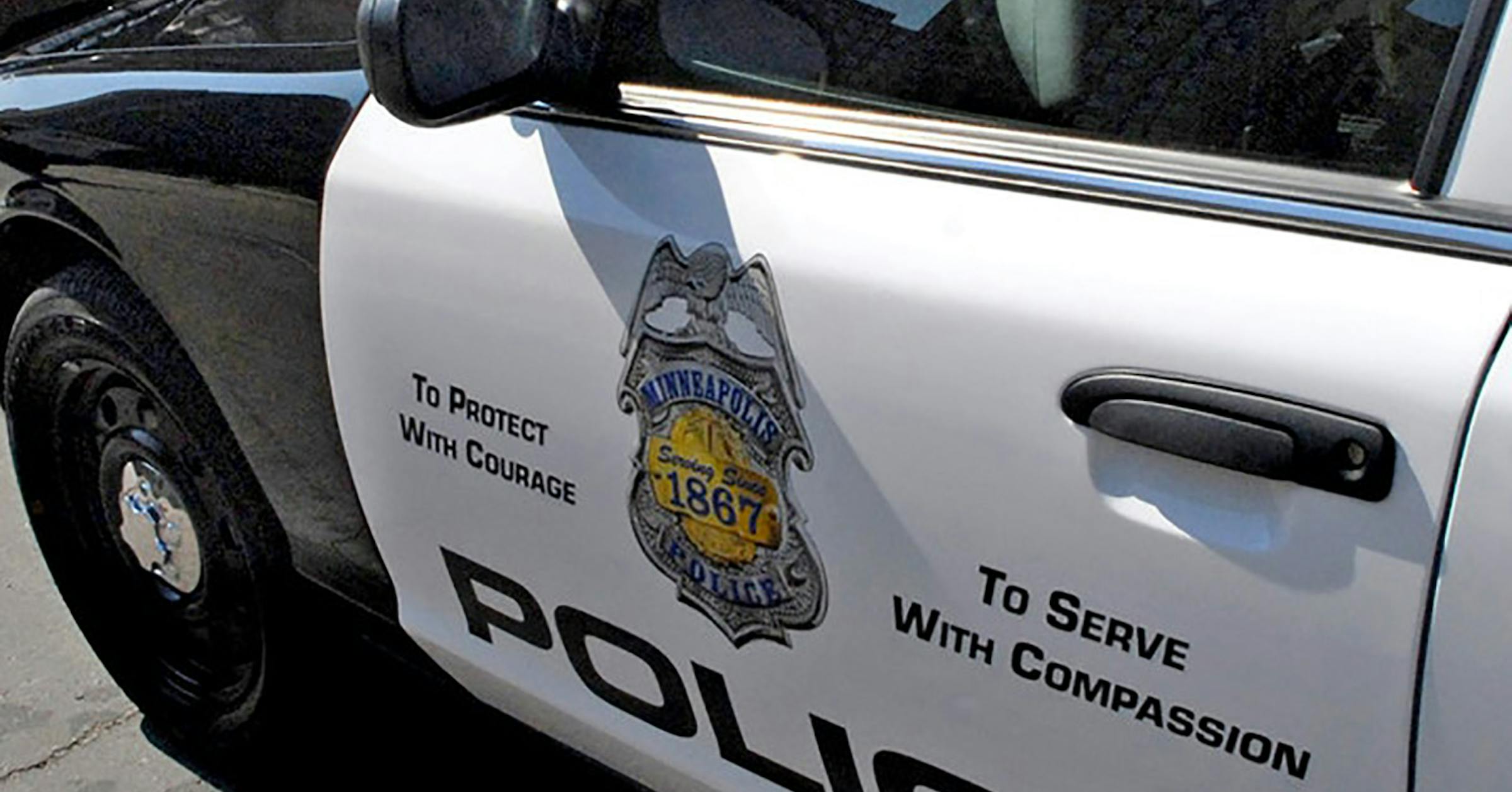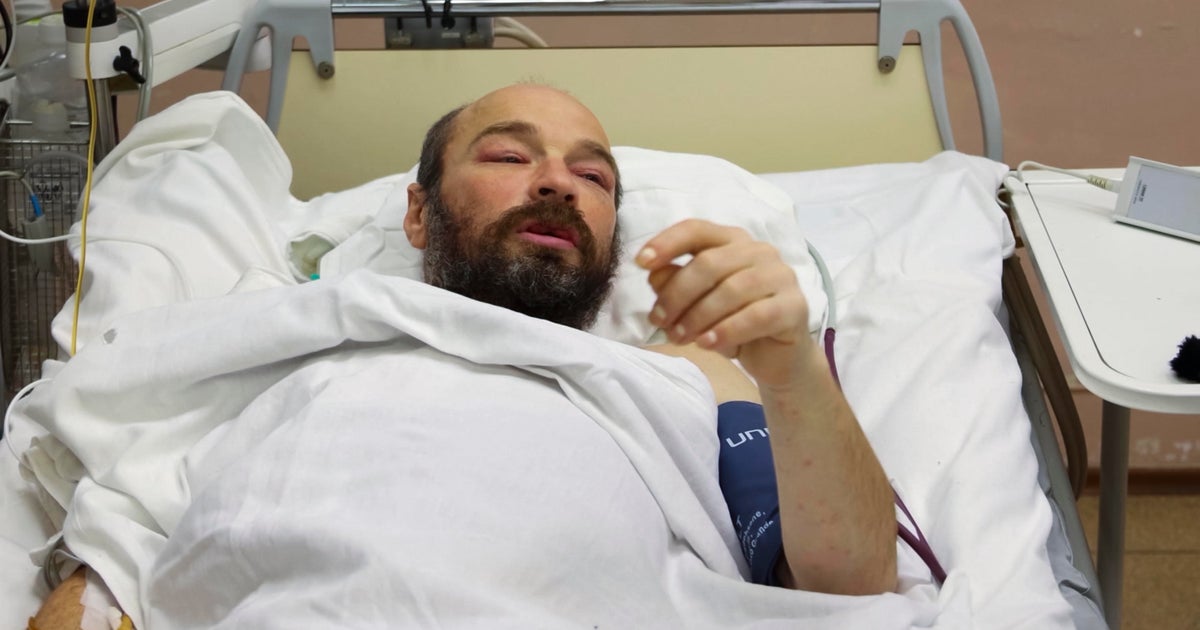Star Tribune
In Newark, police chief nominee O’Hara described as leader who’s up to the task of structural change

NEWARK, N.J. — Beneath the steps of City Hall, George Floyd sits serenely on a park bench, his left arm outstretched along the back, beckoning visitors to come rest beside him.
There’s no plaque bearing his name. No dedication to the man whose murder sparked a global movement to re-examine policing. But here, Floyd is portrayed with dignity, and at peace.
The 700-pound bronze statue represents the long battle for racial justice in this majority-Black city — 1,200 miles from the south Minneapolis intersection where he took his last breath under the knee of a white officer.
To outsiders, it may seem a strange place for such a monument. But in Newark, where scars remain visible from decades-old clashes between citizens and police, the significance is clear: The struggle continues.
“People understand we’re honoring someone’s humanity,” said Brian O’Hara, the former Newark public safety director who helped lead the city through a federal consent decree overhauling department practices, a transformation that would later be heralded as a national model for police reform.
Now O’Hara, who’s slated to become the next Minneapolis chief, is vowing to guide the department that killed Floyd down the same path. Those who know him best believe he’s up to the task.
Dupré Kelly, a West Ward city council member who represents a diverse and socioeconomically challenged area with some of the city’s most concentrated levels of gun violence, recalled how he dragged O’Hara to a basement meeting with several formerly incarcerated men who said they were looking for an alternative to street life.
O’Hara asked his security detail to remain in the car and entered the storefront unarmed. He approached them as equals, and ultimately won their respect.
“Brian O’Hara speaks the language of the community,” said Kelly, a former hip-hop star with the Lords of the Underground, who made history as the first platinum-selling artist to take elected office this June. “Police work is more than just being aggressive; it’s being concerned. He is concerned.”
Newark faced calls to improve accountability after an investigation by the U.S. Department of Justice found widespread constitutional violations and lax oversight. Reforms made in the wake of that 2016 consent decree are credited with revamping the department’s use-of-force policies, enacting tougher sanctions on problem officers and expanding community engagement programs to rebuild trust.
But that wasn’t easy.
Members of the initial Consent Decree & Planning Division within the Police Department struggled to navigate the process of implementing such rigorous requirements.
“A number of supervisors, shall I say, ‘retired’ because the work was just overwhelming and they didn’t quite know what to do. Some didn’t believe it could be done,” said Peter Harvey, the court-appointed federal monitor who previously served as New Jersey’s first Black attorney general.
That suddenly changed when O’Hara, then a lieutenant, was appointed to lead the effort in 2017, Harvey said. O’Hara was well-organized, he understood the mission, and he developed a plan to achieve it. At community meetings, he acknowledged that a history of misconduct by the Newark Police Department led to federal oversight. That bad behavior would soon end, he promised.
During roll calls, where some veteran officers showed little enthusiasm for change, O’Hara was blunt. “This isn’t going away,” he told them. “Get used to it.”
In several cases, O’Hara championed new policies that went further than what the consent decree even required, Harvey said. While captain, O’Hara lobbied for a First Amendment policy codifying a civilian’s right to observe, object to and record police activity. He also helped issue guidance for how police should interact with members of the LGBTQ community.
“Much of the progress Newark PD has made under the consent decree is directly attributable to the 16- and 18-hour days he put in,” Harvey said.
Deep scars
There is a collective memory in this diverse and densely populated port city 8 miles from Manhattan. Signs of a troubled past are still present in sections of the Old Central Ward where, on July 12, 1967, long-simmering tensions between Black residents and police finally boiled over.
When two white officers brutally beat a Black cabdriver accused of speeding, it set off five consecutive days of race riots. Law enforcement and the National Guard, which positioned snipers on rooftops and deployed tanks on city streets, were accused of using indiscriminate force to quell unrest. In the end, 26 people were dead and about 700 were injured.
The ’67 Newark Riot — later reframed as the ’67 Newark Rebellion — marked a defining moment in the city’s history. Today, a modest memorial sits on a small, triangular patch of untidy grass at Springfield and 15th avenues. A single granite tombstone lists the names of those killed.
Yet for more than 30 years after the riots, a wooden sign hung in the entryway of the West District, where officers once dragged the beaten cabbie, John William Smith. “Welcome to the Wild, Wild West.”
“Certainly, that’s a sign of culture,” said O’Hara, 43, who remembers seeing the plaque when he joined the force in 2001. Last year, city officials closed the precinct, repurposing the space for the Office of Violence Prevention and Trauma Recovery. The building, with its bricked up first-floor windows — a lingering reminder of the uprising — will one day house a museum.
Larry Hamm, a longtime social justice activist and president of People’s Organization for Progress, leads an annual rally and march commemorating the ’67 Rebellion. Before the consent decree, Hamm said, demonstrators would often be hassled by police who sometimes restricted their movements.
But in recent years, he’s noticed a tangible shift in the way officers treat their loudest critics. While police brutality still exists, the overall conduct of the department has become more respectful toward its citizens.
“It was no longer hostile,” said Hamm, who suspects that George Floyd’s murder forced some officers to recognize the dire need for reform. “O’Hara, based on my interactions with him, exemplified that.”
Tough, fair leader
After two decades as a Newark cop, O’Hara took over as public safety director, a role that required him to manage a $244 million budget and oversee 2,000 employees.
Union leaders noted that O’Hara was a regular presence at precincts, always willing to listen to members’ concerns. But he was also not afraid to dole out discipline.
O’Hara suspended officers and supervisors who ran afoul of department standards, including for off-duty misconduct like drunken driving and domestic abuse, said Jeff Weber, president of the Newark Fraternal Order of Police Lodge No. 12.
“He expected his officers to carry themselves a certain way. To be professional,” said Weber. “He was fair.”
The city of Newark denied a Star Tribune data request for O’Hara’s own personnel and disciplinary files, citing a state law that exempts such records from public disclosure.
O’Hara sometimes clashed with the unions when siding with the progressive policies of Mayor Ras Baraka. After nine Newark cops died of COVID, O’Hara wrote an op-ed to the New Jersey Star-Ledger advocating that officers get inoculated against the virus. The sentiment didn’t win over a sizable faction of the rank-and-file who were opposed to a citywide mandate and sought religious exemptions.
In July, Baraka elevated O’Hara to the newly created position of deputy mayor of strategic initiatives for police services and public safety. His removal as public safety director coincided with an uptick in property crime. However, many within the department viewed the changeup as politically motivated. At that point in the summer, Newark had logged fewer shootings and fatalities than each of the previous four years.
This city of 300,000 — half of whom are Black, a third Latino and 11% white — is often unfairly characterized by its history of violent crime. But FBI statistics show that crime in Newark started a precipitous decline in the mid-1990s. Newark reached a historically low murder count in 2020, when record gun violence ignited in Minneapolis and other American cities.
If confirmed later this month, O’Hara will lead a department that looks fundamentally different from the only one he’s ever known. Newark is among the few American cities with a majority-minority police force — 80% of the roughly 900 officers identify as Black or Hispanic, while 20% are white. Nearly one-quarter are women. A residency requirement for new recruits means that most Newark cops have lived in the city they serve.
His wife, Lt. Wafiyyah O’Hara, is the highest ranking Black and Muslim woman in the agency.
The Minneapolis Police Department, by comparison, is 69% white. It employs just six Black women. And few officers live within the boundaries of the city.
As chief, O’Hara will be expected to both replenish and diversify the depleted ranks, while implementing wide-reaching reforms. Not everyone will support that mandate.
“There’s some officers who like being on a runaway train. They don’t want a conductor. They don’t want rules,” said Harvey, adding that an initial challenge will be identifying allies within the department who support cultural change. “The question is: Will he get the support he needs?”
Staff writers Jeff Hargarten and Liz Navratil contributed to this report.
Star Tribune
A 20-year-old St. Paul man is now facing three murder charges in separate shootings.

A 20-year-old St. Paul man is now facing three murder charges in separate killings in Minneapolis in recent years.
Albert Jerome Lucas was charged Wednesday in Hennepin County District Court in connection with the killing of 20-year-old Antonio Vernon Harper, of Minneapolis, on Nov. 6, 2023, in Minneapolis in the 3300 block of Dupont Avenue N.
Lucas, who has been jailed since May and remains held in lieu of $2 million bail, is scheduled to appear in court early Thursday afternoon. He does not yet have an attorney listed in court records for this latest charge.
According to Wednesday’s criminal complaint, which charges Lucas with one count of second-degree murder and two counts of attempted second-degree murder:
Officers arrived to the scene and saw Harper on the ground suffering from a fatal gunshot wound to the chest.
A witness told police that she saw three males “hugging” the side of home and looking toward Harper and two of his friends. Gunfire from Lucas erupted, hitting Harper, and the suspects fled in a car. One of Harper’s friends shared with officers that the shooting was gang-related.
Officers saw the vehicle two days later and determined it had been stolen in St. Paul. The driver fled police, but officers soon found the vehicle. DNA on a cigar wrapper inside the vehicle was tested and came back as a match for Lucas.
Star Tribune
Palestinian officials say an Israeli strike on a school-turned-shelter in northern Gaza killed 15
DEIR AL-BALAH, Gaza Strip — An Israeli strike on a school sheltering the displaced in northern Gaza on Thursday killed at least 15 people, including five children, according to Gaza’s Health Ministry.
The Israeli military said the strike targeted dozens of Hamas and Islamic Jihad militants who had gathered at the Abu Hussein school in Jabaliya, an urban refugee camp in northern Gaza where Israel has been waging a major air and ground operation for more than a week.
Fares Abu Hamza, head of the ministry’s emergency unit in northern Gaza, confirmed the toll and said dozens of people were wounded. He said the nearby Kamal Adwan Hospital was struggling to treat the casualties.
“Many women and children are in critical condition,” he said.
The Israeli military said it targeted a command center run by both militant groups inside the school. It provided a list of around a dozen names of people it identified as militants who were present when the strike was called in. It was not immediately possible to verify the names.
Israel has repeatedly struck tent camps and schools sheltering displaced people in Gaza. The Israeli military says it carries out precise strikes on militants and tries to avoid harming civilians, but its strikes often kill women and children.
Hamas-led militants triggered the war when they stormed into southern Israel on Oct. 7, 2023, killing some 1,200 people, mostly civilians, and abducting around 250 others. Some 100 captives are still inside Gaza, about a third of whom are believed to be dead.
Israel’s offensive has killed over 42,000 Palestinians, according to Gaza’s Health Ministry. It does not differentiate between civilians and combatants but says women and children make up a little more than half of the fatalities.
Star Tribune
Como Zoo names new Amur tigers
Twin Amur tigers born at Como Zoo in August now have names — Marisa and Maks.
Two long-time volunteers who have worked with zookeepers to care for and teach the public about the zoo’s big cats came up with the names, the first to be born at the St. Paul zoo in more than 40 years.
Marisa, a name that the volunteers found to mean “spirited and tenacious,” call that a perfect reflection of her personality. The name also carries special significance for the Como Zoo community, as it honors a retired zookeeper of the same name who was instrumental in the care of large cats during her 43 years at the zoo, Como Zoo and Conservatory Director Michelle Furrer said.
The male cub has been named Maks, which is associated with meanings like “the greatest” or “strength and leadership.” The volunteers felt this was an apt description of the male cub’s confident demeanor and growing sense of leadership, Furrer said.
“Marisa and Maks aren’t just names; they’re a fun reminder of the passion and care that keep us committed to protecting wildlife every day,” Furrer said.
The newborns and their first-time mother, 7-year-old Bernadette, remain off view to allow for more bonding time, zoo officials said. The cubs’ father, 11-year-old Tsar, has been a Como resident since February 2019 and remains on view.
Fewer than 500 Amur tigers — also known as Siberian tigers — remain in the wild as they face critical threats from habitat loss, poaching and human-wildlife conflict, the zoo said.





GIPHY App Key not set. Please check settings